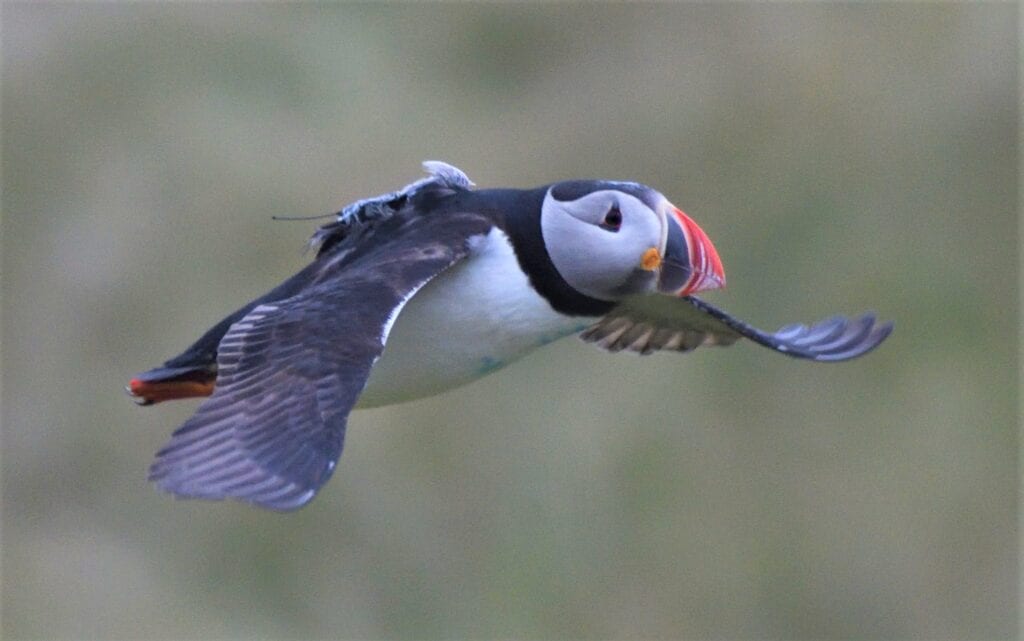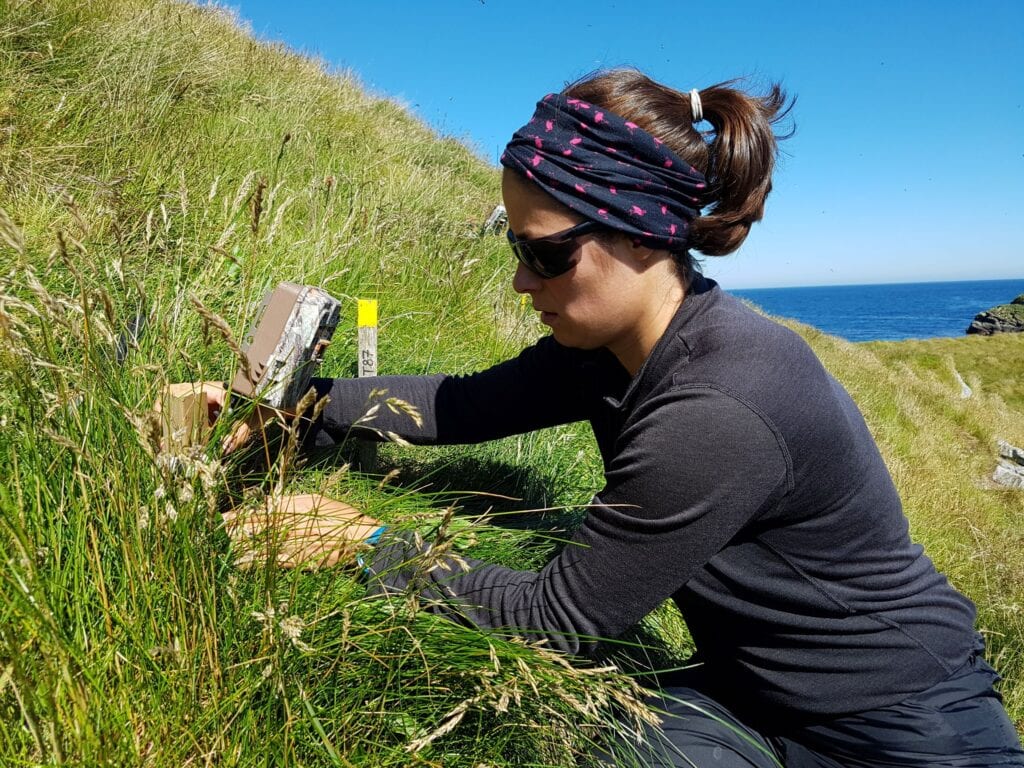GPS-tracking of chick-rearing puffins reveals causes of population decline
The Atlantic puffin is a declining species in the northeast Atlantic and, in some populations, productivity has remained poor for half a century. An international team of researchers has conducted a study aimed to identify the mechanisms driving poor breeding success in declining populations, in particular in relation to food availability.
Combining technological and analytical advances
Focusing on four different puffin populations with contrasting breeding success in Iceland, Norway and Wales, the research team deployed tiny GPS trackers on breeding puffins in the colonies to follow their feeding movements. Positional data from the trackers were automatically uploaded to base stations near the colonies when the birds returned to their nests after foraging trips. Automated camera traps near the puffin burrows captured images of the food items brought in by the birds. Combining these data with DNA analyses of puffin droppings, the researchers were able to locate feeding grounds, feeding intervals and the quality of prey fed to the chicks.
Rare meals and poor food quality
The tracking data revealed that the puffins in all four study populations used a combination of short and long foraging trips. By comparing GPS tracks, the researchers found that puffins breeding in colonies where reproductive success was low flew much further from the colonies to find food than birds in more successful colonies. Longer foraging trips resulted in longer feeding intervals. In addition to being fed less often, the chicks in the less successful colonies were offered smaller food loads containing prey items of lower quality, resulting in reduced growth and starvation.
Climate change is the main cause
The lack of suitable prey near the puffin colonies, which reduces breeding success and ultimately leads to reduced recruitment and population decline, is in part caused by climate change, as changes in currents and sea temperatures affect the abundance and availability of the fish the puffins usually rely on to rear their chicks. Similar responses to low prey availability close to the colony has also been seen in other species, such as the little auk. Combining relatively novel techniques in an innovative manner, this study has provided a more detailed view into the mechanisms in play when climate change and human impacts affect seabirds and other parts of the marine food webs. To successfully manage marine ecosystems, such knowledge is essential if we aim to improve the situation for endangered seabirds, such as the Atlantic puffin.
Read the article:
Contact person: Tycho Anker-Nilssen, NINA


